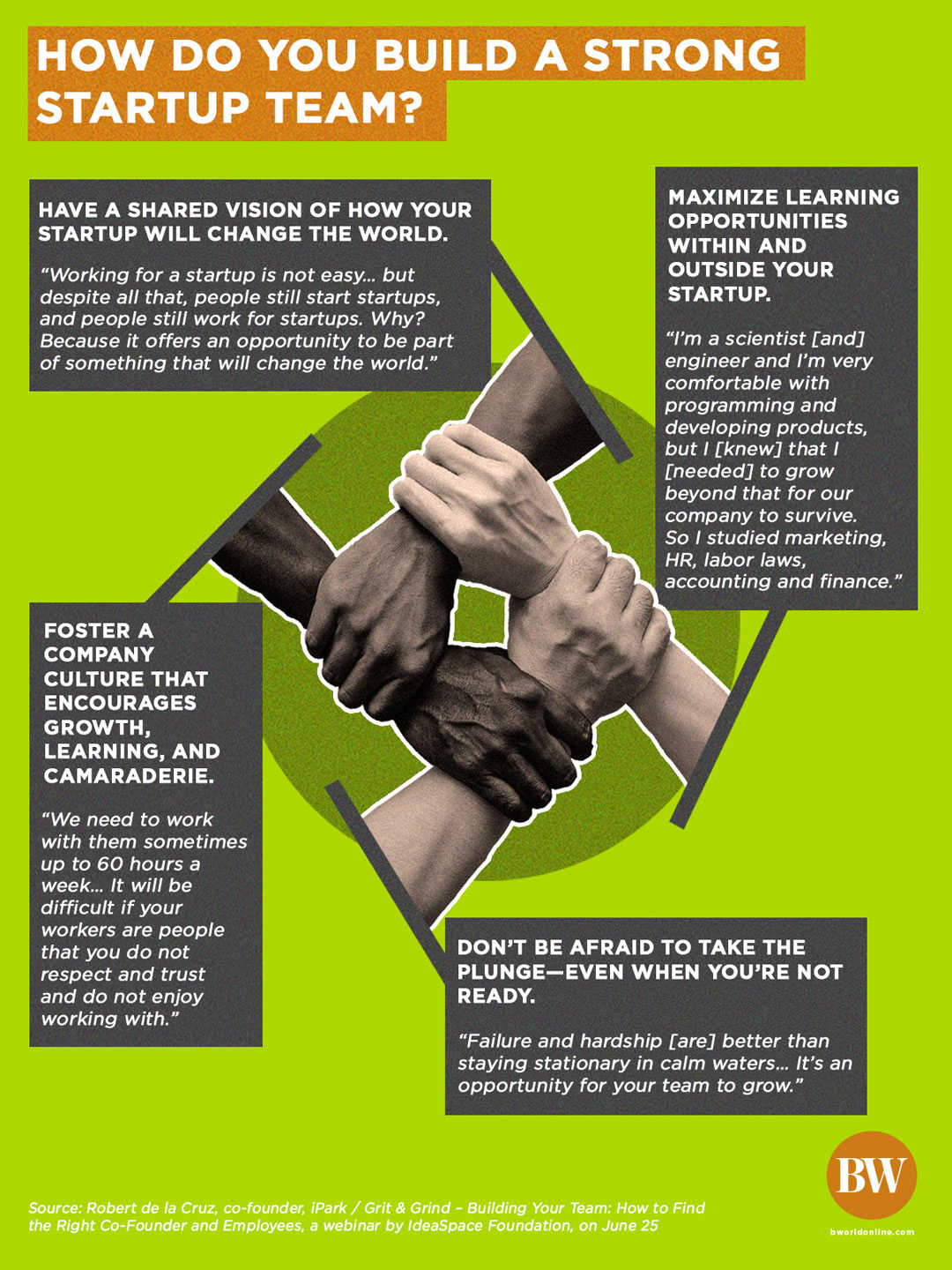Four steps to building a strong startup team
By Mariel Alison L. Aguinaldo
So you’ve successfully laid the foundation for your startup. It’s time to move on to the next phase: building a team.
Your employees will help determine not only the quality of your product but also the kind of growth that your startup will have through the years.
Robert de la Cruz, co-founder of iPark, a parking automation company, shared four steps during Grit & Grind—Building Your Team: How to Find the Right Co-Founder and Employees, a webinar by IdeaSpace Foundation, on June 25.
1. Have a shared vision of how your startup will change the world.
Startups are built on a vision, whether it’s helping marginalized communities or providing cost-friendly, innovative solutions. When hiring employees, discuss your vision with them and ensure that they feel passionate about it.
Mr. de la Cruz shared how he was able to hire a managing director of a BPO company for a fifth of his previous salary. How? The man was excited to be a part of an endeavor that he could be proud of to his children.
“Working for a startup is not easy. Working long hours is the norm, pay is not guaranteed, but despite all that, people still start startups, and people still work for startups. Why? Because it offers an opportunity to be part of something that will change the world,” he said.
2. Foster a company culture that encourages growth, learning, and camaraderie.
A grand vision will surely get people to join your startup. But for Mr. de la Cruz, what makes them stay is a nurturing and supportive company culture with members that listen to each other, make their voices heard, and work hard together to reach a common goal.
One way to do this is by building genuine relationships with your teammates. Get to know their stories and hang out with them after work (yes, it’s possible even during this pandemic).
“We need to work with them sometimes up to 60 hours a week… It will be difficult if your workers are people that you do not respect and trust and do not enjoy working with,” said Mr. de la Cruz.
3. Don’t be afraid to take the plunge—even when you’re not ready.
Sometimes, a great opportunity arrives in the form of a customer who desperately needs your product and is willing to pay for it no matter the cost. But then, you find that your product isn’t ready yet. What do you do?
According to Mr. de la Cruz, you seize the chance anyway. “Time is not your friend. It doesn’t care about you and just keeps moving forward… So form your team around taking advantage of these buying opportunities… When you realize that your customer is ready to buy, take the dive, and take action.”
But what if this attempt fails? Then learn from it and move on.
“Failure and hardship [are] better than staying stationary in calm waters… It’s an opportunity for your team to grow,” said Mr. de la Cruz.
4. Maximize learning opportunities within and outside your startup.
As a lean team, you and your members may have to take on roles outside of your skill set. While it may be intimidating at first, consider it a chance to broaden your knowledge.
Mr. de la Cruz, for instance, found himself learning about marketing, labor laws, human resources, and accounting during iPark’s initial pivot.
“I’m a scientist [and] engineer and I’m very comfortable with programming and developing products, but I [knew] that I [needed] to grow beyond that for our company to survive,” he said.
However, there are times when your team can only learn so much without sacrificing your deliverables. This is when you search for external learning opportunities, particularly through incubators, accelerators, and other members of startup communities. “The priceless contribution of IdeaSpace to us is access to mentors who are sincere in their desire to help the startup,” said Mr. de la Cruz.





